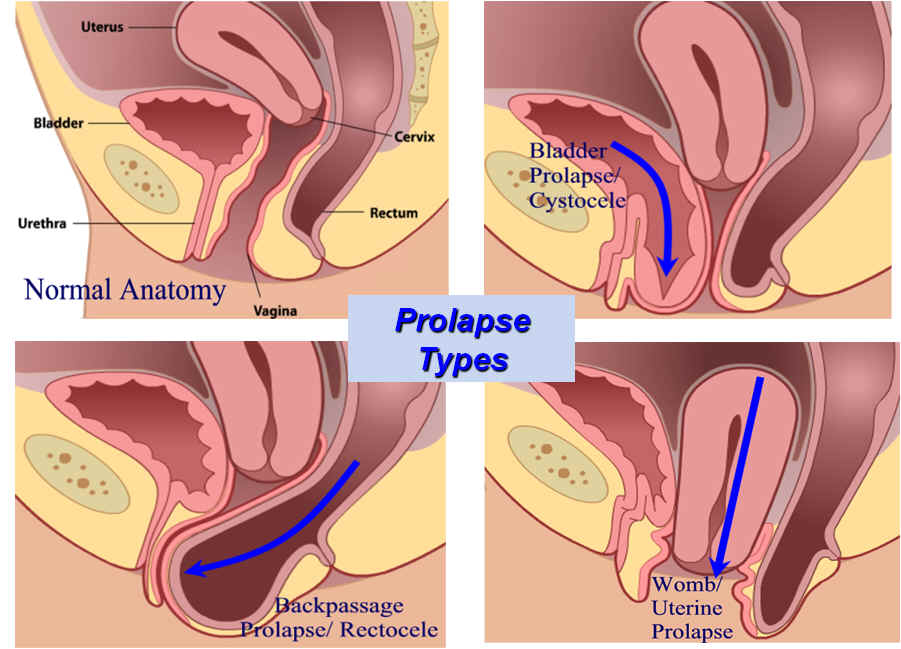PELVIC ORGAN PROLAPSE

Pelvic organ prolapse is the bulging of one or more pelvic structures into the vagina and the vaginal opening. The vagina is surrounded by a variety of pelvic structures. The rectum is located beneath the vagina and the bladder rests above. The uterus, bowel, and the rest of the abdominal contents are behind. When the support of any one of these structures weakens, vaginal prolapse can occur.
TYPES OF PROLAPSE
There are six different types of pelvic organ prolapse:
- Cystocele /“Dropped Bladder”: Herniation of the bladder with associated descent of the interior vaginal segment.
- Cystourethrocele: A cystocele combined with distal prolapse of the urethra (bladder neck) with or without associated urethral hyper-mobility.
- Rectocele: The herniation of the rectum with associated descent of the posterior vaginal segment.
- Uterine Prolapse: Descent of the uterus and cervix into the lower vagina, hymenal ring or through the vaginal interoitus. This occurs when the supporting ligaments of the uterus weaken causing the back wall of the uterus to “give way” allowing the uterus and cervix to move towards the front of the vagina.
- Enterocele: This type of prolapse typically occurs in patients who have had a hysterectomy and the support of the pelvic ligaments have been disrupted causing the small bowel within a hernia sac to protrude into the vagina.
- Vaginal Vault Prolapse: Descent of the vaginal apex (following hysterectomy) into the lower vagina, hymenal ring or through the vaginal canal.

CAUSES AND SYMPTOMS
Prolapse is a result of childbirth, pelvic trauma, connective tissue disorders, straining during bowel movements, and the aging process. The most common symptoms are the sensation of pelvic pressure or heaviness, and a protrusion of tissue from the vagina, as if something is “falling out” of it.
DIAGNOSIS AND TREATMENT
Diagnosis of prolapse is based upon the findings of a physical examination. Management is determined by both the severity of symptoms and the prolapse. Treatment may include observation, insertion of a pessary at the physicians’ office and vaginal or laparoscopic pelvic organ prolapse surgery.
FELLOWSHIP TRAINED IN THE FIELD OF MINIMALLY INVASIVE GYNECOLOGY
Minimally invasive surgery (MIS) encompasses several techniques that allow surgeons to operate through small incisions or natural orifices. MIS includes laparoscopy, mini-laparoscopy, hysteroscopy, robot-assisted surgery, single port surgery and natural orifice techniques.
<div class="recog-contact"><!-- [et_pb_line_break_holder] --><a href="tel:2409124546">(240) 912-4546</a><!-- [et_pb_line_break_holder] --><p>Transportation and Accommodations</p><!-- [et_pb_line_break_holder] --></div>
